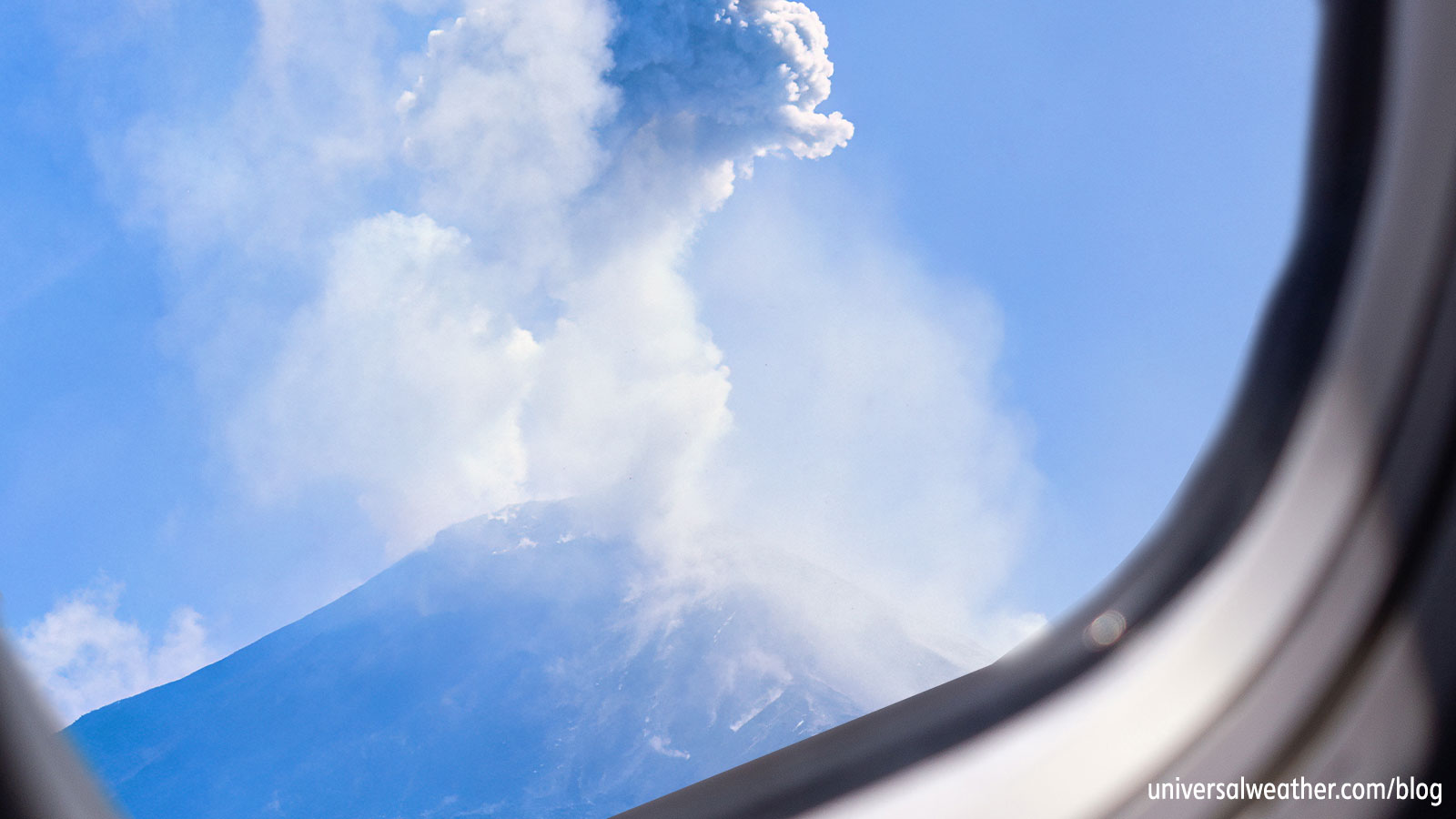Risks Volcanic Activity and Ash Clouds Have on Business Aviation – Part 1: Determining Risks

This business aviation blog post is the first part in a series covering the risks volcanic ash has on aviation.
While it’s relatively rare for volcanic activity to impact routine global aviation activity, there are occasional dramatic examples of operational disruptions. The potential risks of operating in regions of volcanic activity range from flight schedule disruptions to catastrophic engine failure. Here is an overview of the risks associated with these types of events:
1. What is volcanic ash and why is it an issue?
Volcanic ash can contain fine fragments of lava, rock and sand in various sizes and particles, usually less than two millimeters across. Similar to fine crushed glass, this is extremely abrasive and it can be corrosive, possibly electrically conductive when wet. Ash clouds can become a hazard for operators, particularly when the clouds ascend to great heights or ash fall affects certain airfields. Particle size determines ash cloud buoyancy.
2. Are there different categories of volcanic ash?
Volcanic ash particles vary in size and density, not only impacting ash cloud buoyancy, but also its effect on aircraft engines, flight control systems and/or airframes. Engine manufacturers have established operating guidelines for ash tolerance and concentration. Operators must be aware of these tolerances in order to determine if it is indeed safe to proceed through any volcanic ash.
3. How frequently does volcanic ash impact business aircraft operations?
Fortunately, it’s rare that volcanic ash significantly impacts general aviation. In most cases, ash falls near the volcano, and ash clouds rarely extend above FL 150 – 200. There are occasions when volcanic ash may travel hundreds or even thousands of miles, extending to great heights far away from the volcanic source. Operating risks include diminished visibility, damage to flight control systems and potential jet engine failure. Operators need to be vigilant of the sudden nature of volcanic eruptions and vertical extent of ash clouds. An active volcano or ash cloud may prevent, delay or add thousands of miles to a flight route. Additionally, airfields may be closed for weeks or months due to volcanic ash fallout.
4. What are some repercussions of flying through volcanic ash?
In addition to catastrophic loss of engines, smoke can fill the cabin, and the abrasive nature of the ash cloud may damage aircraft windows, control surfaces and airframes. The smell of sulfur in the cabin is an indication that the aircraft is traversing through an ash cloud. While an ash cloud may be detected visually, it’s often difficult to recognize the difference between clouds and ash clouds, especially at night.
5. What are examples of recent major volcanic ash events?
In December 1989, a Boeing 747 lost all engines and dropped nearly 28,000 ft. before the crew members were able to restart the engines. During the spring of 2011, a volcanic eruption in Iceland crippled air traffic across the North Atlantic for months. During the summer of 2010, another volcano, Cordon Caulle, along the Chilean/Argentine border impacted air traffic as far away as Australia and New Zealand and closed airports in Argentina and Uruguay.
06/14/2013: We would like to thank Miquel Traveria Bondi for the correction above.
Conclusion
In 2011, we learned how volcanic events have the potential to significantly impact business aviation on a global scale. These operating risks must be taken seriously, and your 3rd-party provider should always be contacted for advice on risk mitigation whenever you’re operating to a region of potential volcanic activity.
Questions?
If you have any questions about this article, contact me at stevearbogast@univ-wea.com.
Later, we’ll discuss dealing with volcanic ash risks.



